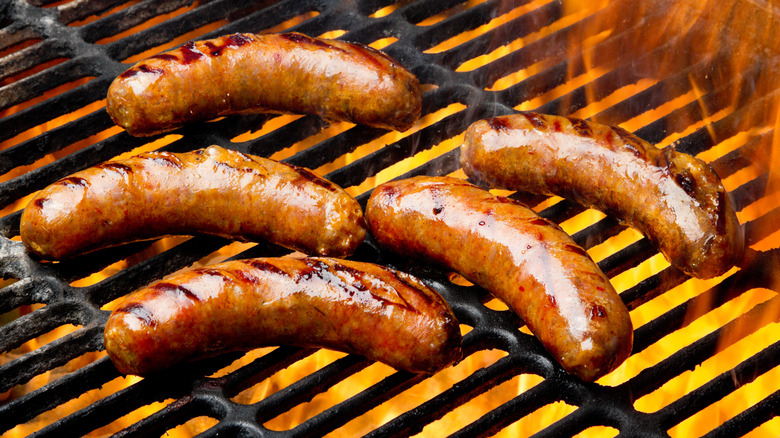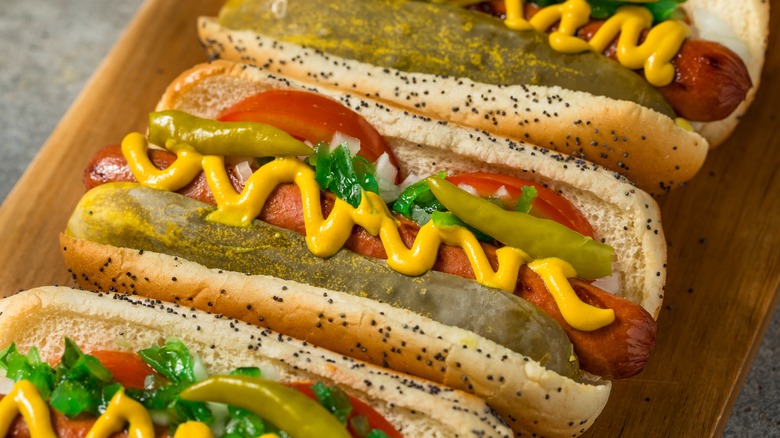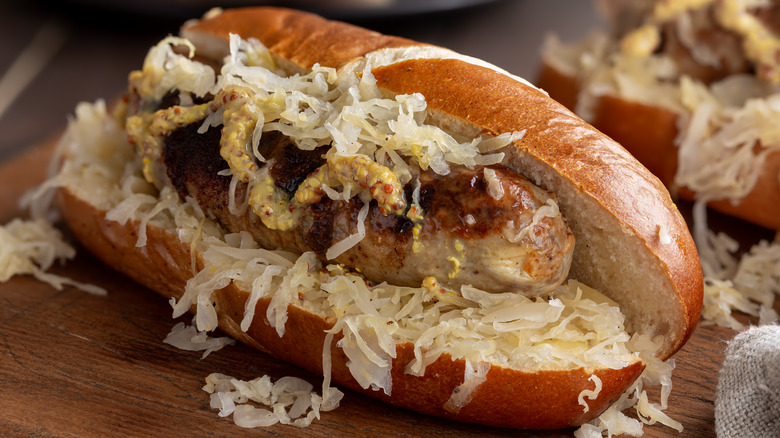The Differences Between Brats And Hot Dogs
When it comes to the many types of sausages, bratwurst and hot dogs often take center stage at barbecues, tailgates, and family gatherings. They might seem like close cousins, especially when they're snug in a bun with a swirl of mustard, but don't let their similar appearances fool you. They differ quite a bit in taste, composition, and overall personality.
Bratwurst and hot dogs each bring their own unique qualities to the table. Bratwurst, deeply rooted in German culinary tradition, offers a robust spice that appeals to those who appreciate a more conventional preparation method. Its cultural significance demands respect and appreciation. Hot dogs, on the other hand, are the ultimate crowd-pleasers. Quick, easy, and endlessly adaptable, they are the stars of cookouts, ball games, and street carts everywhere. Both are celebrated for their distinct features — bratwurst for its heritage and bold flavors and hot dogs for their universal appeal.
Hot dogs are classic and convenient handheld fare
With their straightforwardness and versatility, hot dogs are a true American icon. They conjure up images of baseball games, bustling city streets, and carefree summer picnics. This sausage is all about practicality and consistency, embodying a no-fuss, grab-and-go spirit. Originating as European frankfurters, hot dogs were popularized in the United States in the late 19th and early 20th centuries. Unlike bratwurst, hot dogs are made from finely ground pork, beef, or a combination of the two.
The hot dog's smooth, finely emulsified meat blend results in a uniform texture and mild flavor that's loved by all ages. Plus, its preparation is a breeze. Grill, boil, or microwave a frank for a few minutes, and you've got yourself a delicious meal. A hot dog's aromatic seasoning mix, often a medley of salt, pepper, garlic, nutmeg, cinnamon, cumin, paprika, allspice, coriander, cinnamon, and cumin, keeps things simple while the casing adds that familiar, satisfying snap that contrasts with the soft interior.
Of course, the toppings are essential. Although America's favorite hot dog topping isn't ketchup (it's mustard), feel free to experiment with chopped onions, relish, chili, and other things you should be putting on your hot dog, but aren't — like crushed potato chips, melted cheese, and pesto.
Bratwurst is a symbol of tradition
Bratwurst, affectionately known as "brats," takes us on a savory journey back to its German roots. The name itself is a nod to its recipe: "Brāt" derives from the Old High German word for "meat without waste," and "wurst" means sausage. Bratwursts are typically made from high-quality pork, though variations with veal and beef are also available. The real magic lies in a robust blend of spices that includes garlic, caraway, nutmeg, coriander, and a hint of marjoram.
In terms of texture, bratwurst has a coarser grind, giving it a meatier bite. Unlike the pre-cooked hot dogs, bratwurst requires more commitment. Simmering bratwurst in beer is a good idea due to the malty beverage's ability to infuse the meat with its signature flavor and reinforce the casing. Finally, a stint on the grill or in the frying pan gives the brats a caramelized, crispy exterior that's celebrated at German festivals like Oktoberfest, where they're served with sauerkraut, mustard, pickles, and pumpernickel or rye bread.
Whether you're drawn to the rich, nuanced taste of bratwurst or a hot dog's comforting familiarity, there's no denying that these sausages have carved out a special place in the hungry hearts of many. And let's be honest, there's always room for both on the grill.


